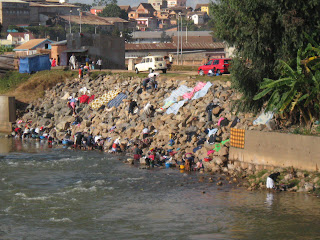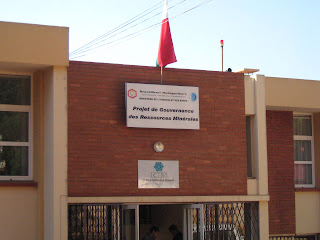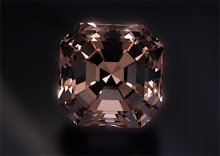We've now arrived at Illakaka, and are in the process of being introduced to the infamous, Jean Noel. Jean is revered in local legend as having been responsible for getting the sapphire diggings off the ground, [well, maybe into the ground!] and was involved from the very beginning of the mining project. Standing next to Jean is Jim Fiebig.

We are all now seated at Jean's home, having refreshments and getting to know each other. Jean has been very gracious even though we were suprise guests.

Seated behind me is one of Jean's children. They were very friendly and playful.

And now….. it was our time to begin buying at the famed Illakaka. While we were away surveying the mining areas, Jean Noel was busy spreading the news that buyers were in town. As we were seated at his home, we noticed the line of dealers wrapped around his compound waiting for us. Jean seated us in the central area of his simple home and screened the sellers before they entered.

Here's one of the first parcels offered up. As is tradition in his home, the rough gems are dropped into the dish. And then it is up to us to decide if they meet our desires or criteria. This parcel was a mix of different colored Sapphires varying in size from 3/4 gram to just over a gram.




One by one they came in and showed us their parcels. Some were a single stone lot, while others had major parcels for us to preview. Since these miners were not educated men, at least not educated regarding gem rough, it felt strange to look through a parcel and separate the Spinels from Garnets from Zircons. If they found them together, they showed them together. This is much different from purchasing rough at most any other venue.
As we have all been reminded from Richard Hughes’ books, the closer you are to the mine, the more likely you’ll find synthetics and imitations mixed in with the real goods. And so, it was also true here in Illakaka.
Seated on the left is Naomi Sarna. She is particularly interested in the larger roughs as the type of carving she performs does not lend itself to the smaller goods. Above and to my left is Alain who guided us all along the way through Madagascar.

After looking at rough for five hours the stream of dealers finally came to an end. We were okay with that since it is stressful for us as well. Every time you selected pieces, you needed to negotiate with them immediately to make a buy. If a conclusion was not reached in minutes, they came back later to take another crack at us to see how much we wanted the goods. As much as I normally do not enjoy the bargaining, there is a certain ‘game-i-ness’ to it. I believe it is something one must get used to as it is not something often seen in the western culture.




 This is a vast dig covering several acres as seen in these photos.
This is a vast dig covering several acres as seen in these photos.








 Here's another bus stop, a little closer to the town.
Here's another bus stop, a little closer to the town.


















 When they refer to market-place here, it does not necessarily refer to the gems we were searching for.
When they refer to market-place here, it does not necessarily refer to the gems we were searching for.






